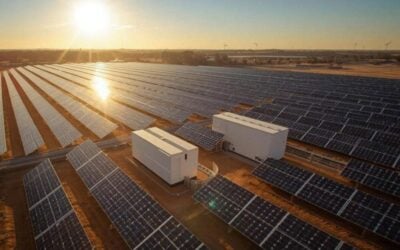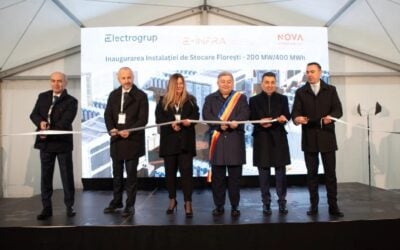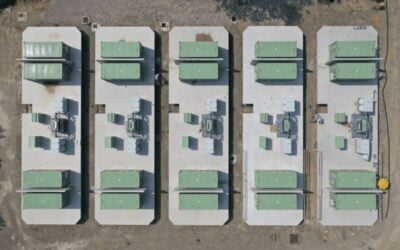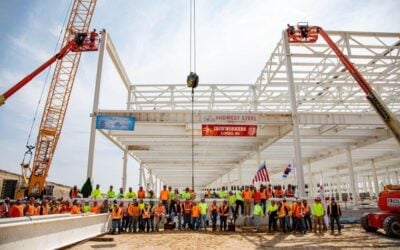SolarCity was already deploying Tesla’s previous generation storage systems on a limited basis before the launch of Powerwall and Powerpack. Image: SolarCity.
Tesla is predicting it could sell more stationary storage to SolarCity during 2016 than was deployed in the entire behind-the-meter segment of the US market last year, according to analysis by GTM Research.
GTM issued a research brief on Monday, authored by senior energy storage analyst Ravi Manghani. Manghani looked at the EV and battery storage system maker’s most recent Form 14A proxy statement sent to stockholders on 15 April.
Tesla is expecting its revenues from selling to the residential and commercial PV installer to leap from US$8 million last year to US$44 million this year, a staggering 450% increase. According to Manghani, this could equate to 116MWh of energy storage at customer sites, for just one of Tesla’s customers, albeit one of the largest, the analyst said.
“That’s 60% larger than the entire 2015 US behind-the-meter energy storage market,” Manghani wrote, quoting around 71.4MWh of storage deployments in that segment nationwide in 2015.
Try Premium for just $1
- Full premium access for the first month at only $1
- Converts to an annual rate after 30 days unless cancelled
- Cancel anytime during the trial period
Premium Benefits
- Expert industry analysis and interviews
- Digital access to PV Tech Power journal
- Exclusive event discounts
Or get the full Premium subscription right away
Or continue reading this article for free
Running over items expected to be covered at Tesla’s annual general meeting on 31 May, the filing with the US SEC said that SolarCity spent about US$3.1 million on Tesla’s previous generation storage systems and US$4.9 million on the latest models.
During the 2015 fiscal year, assuming the higher price point of about US$400 per kWh for the previous generation and US$270 per kWh for the newer, at a weighted average across the residential and commercial segments, Manghani estimated that around 7.8MWh of previous gen products were sold to SolarCity by Tesla. The installer also purchased around 18MWh of the newly launched versions in 2015, adding up to around 26MWh for the year.
The two companies have entered a succession of agreements for the sale and purchase of storage products, dating back to pilot programmes launched in 2013. The relationship between the two companies is well documented, with Tesla CEO Elon Musk both a member of SolarCity’s board and cousin to the PV leasing specialist’s CEO and CTO, Lyndon and Peter Rive.
Ravi Manghani’s brief today stressed that the form itself does not yield many immediate answers, referring only to “sales of… energy storage products” and that GTM had to make a number of assumptions, including the likely split between behind-the-meter and in front of meter products. GTM also excluded a 13MW/52MWh deal to provide utility-scale batteries to a SolarCity 13MW PV farm project in Hawaii from the calculations and assumed that the majority of the rest of SolarCity’s purchases would be behind-the-meter.
After last year’s much-anticipated launch of its battery systems Powerwall and Powerpack, Tesla could again drive the energy storage market on in 2016, Manghani said – if forecasted figures for sales to SolarCity are an accurate indication. Notably, the GTM analyst also said the increases sales figures would be all the more impressive if achieved, given the falling price points for the systems.
“These are, of course, just estimates based on projected revenue. Regardless, they indicate a behind-the-meter energy storage market poised for major growth in the US,” Manghani said.
GTM has been bullish in its recent predictions for growth in the market for the next four years. Its US Energy Storage Monitor 2015 year-in-review report, produced in conjunction with the Energy Storage Association, forecast that the US energy storage will grow in value six-fold from 2015 levels to reach US$2.5 billion a year by 2020.
When Powerwall and Powerpack were launched last April, SolarCity indicated that it was looking to explore options for aggregating solar storage behind-the-meter, including so-called ‘virtual power plants’. One recent development which could have a long-term bearing on this business model is the move by the US Federal Energy Regulatory Commission (FERC) to assess the impact of aggregated storage systems playing into wholesale markets as well as their eligibility for doing so as part of a wider-ranging review into the use of energy storage at transmission system level.
Read Ravi Manghani from GTM Research’s briefing on Tesla-SolarCity sales here.





